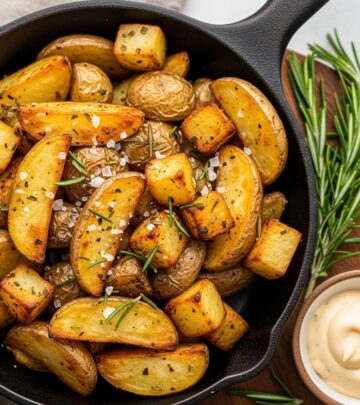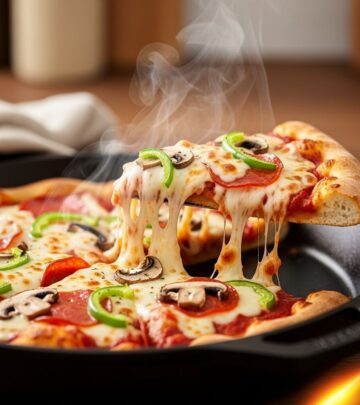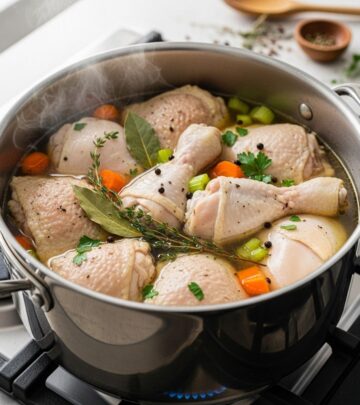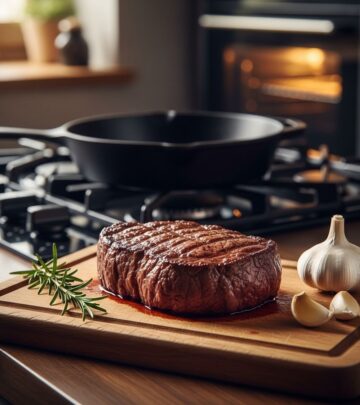The Ultimate Guide to Grilling Seafood: Expert Tips, Recipes, and Techniques
Delicate ocean flavors shine with precise prepping, heat mastery, and bold seasonings.
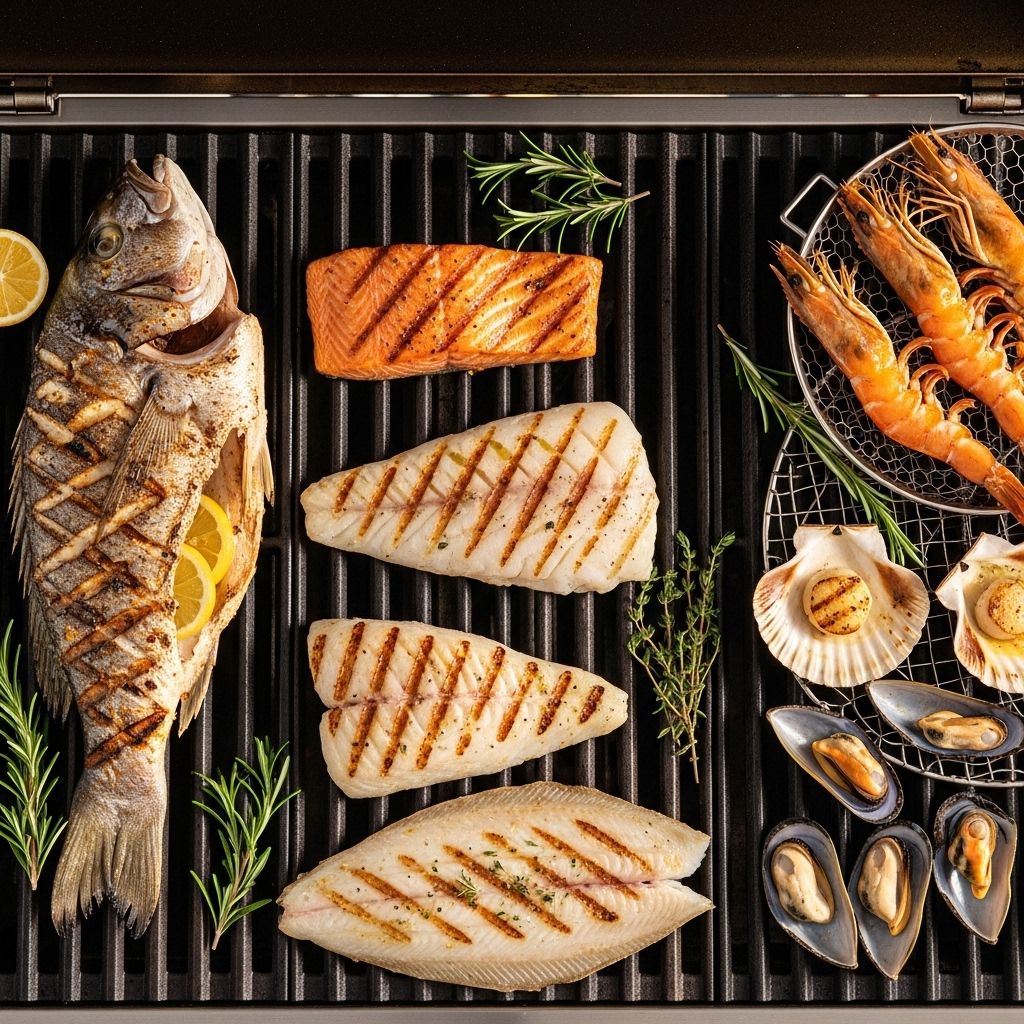
The Ultimate Guide to Grilling Seafood
Grilling seafood is one of the most rewarding culinary adventures. When done right, it delivers food with deeply concentrated flavors, delicate textures, and eye-catching presentation. Whether you are a seasoned grill master or a seafood novice, this guide will help you tackle everything from cooking whole fish to succulent shellfish and flavorful marinades, so you can make the most of your grill all year round.
Why Grill Seafood?
Seafood is ideal for grilling. The intense direct heat sears the exterior, preserving the inherent moisture inside and creating a smoky depth that transforms mild fish and shellfish. Grilling works exceptionally well for:
- Whole fish: The skin crisps up, and the flesh stays tender and juicy.
- Fish fillets: With proper handling, you’ll get beautiful grill marks without sticking.
- Shellfish: Shrimp, scallops, oysters, and lobster cook quickly and take on subtle smoky notes.
Mastering seafood on the grill means you’re ready for spectacular summer feasts or simple weeknight dinners that taste like a seaside holiday.
The Fundamentals: Keys to Grilled Seafood Success
Unlike beef or chicken, seafood can be delicate, so extra care is crucial for a flawless result. Keep these essentials in mind:
- Freshness: Start with the best and freshest seafood you can find—either at your local market or trusted fishmonger. Fresher seafood equals better flavor and texture.
- Clean, Oiled Grates: Prevent sticking by scrubbing grill grates well and oiling them before use.
- Dry the Surface: Pat seafood dry with paper towels; moisture is the enemy of browning and promotes sticking.
- Proper Preheating: Hot grills sear quickly and release proteins from the surface, which helps prevent stickiness and gives beautiful grill marks.
- Control Heat Zones: Use two-zone grilling with direct and indirect heat. Sear over high, then finish on the cooler side if needed.
How to Grill a Whole Fish
Few grilled dishes impress like a perfectly cooked whole fish. Its skin crisps up, it absorbs smoky flavors, and the final presentation is dramatic. Here’s a step-by-step breakdown:
- Choose the right fish: Look for firm, medium-sized whole fish (1–2 pounds), such as branzino, snapper, trout, or striped bass.
- Preparation and seasoning:
- Scale, gut, and rinse the fish thoroughly.
- Pat dry with paper towels.
- Season the cavity generously with salt and pepper.
- Stuff the cavity with aromatics: lemon or lime slices, fresh herbs (like parsley, dill, or thyme), and sliced garlic or ginger enhance flavor.
For those looking to elevate their seasoning game, the Simple Chef’s Trick That Perfectly Seasons Fish Every Time is an invaluable resource. This technique not only enhances flavor but also ensures your fish is seasoned to perfection for an unforgettable grilling experience. - Score the skin: Make shallow diagonal cuts (about 1 inch apart) on both sides. This helps the heat penetrate and prevents the fish from curling.
- Oil and season the surface: Drizzle or brush both sides with a high-heat oil (like canola or grapeseed) and sprinkle with additional salt and pepper.
- Grill setup:
- Prepare a two-zone fire: one high-heat, one cooler area.
- Start fish over high heat to crisp the skin, then move to indirect heat to finish if needed.
- Ensure grates are very clean and brushed with oil immediately before placing the fish.
- Cooking tips:
- Once it’s down, don’t move the fish until the skin releases easily from the grates (usually after 2–4 minutes).
- Use a wide spatula and a carving fork together to gently lift and flip.
- Finish grilling the second side until the thickest part registers 135°F (57°C) or the flesh flakes easily.
Pro tip: Serve with a drizzle of olive oil, fresh lemon juice, and a shower of chopped herbs for a Mediterranean flourish.
Grilling Fish Fillets: Achieving the Perfect Sear
Fish fillets cook much faster and can be more prone to sticking or breaking apart. Follow these steps for foolproof grilled fillets:
- Pick the right fillet: Skin-on fillets work best (the skin helps keep the fish intact). Opt for salmon, arctic char, halibut, swordfish, or mahi-mahi.
- Pat dry, oil, and season: Just as with whole fish, remove all surface moisture, coat with oil, and season simply.
- Grill skin-side down: Place fillets skin-side down on the hottest part first. Cook most of the way on this side—the skin acts as a barrier and gets nice and crispy.
- Don’t flip too soon: Wait until the fish releases naturally before flipping; premature flipping causes tearing.
- Finish gently: Transfer to indirect heat to finish cooking if needed; aim for an internal temperature of 130–135°F (54–57°C).
Tip: For delicate or skinless fillets, use a grill basket or foil to prevent losing pieces through the grates.
The Secrets to Grilling Shellfish
Shellfish shine on the grill, gaining a smoky essence and retaining juiciness. Here’s how to approach the most popular types:
| Shellfish Type | Preparation | Recommended Method | Grilling Time |
|---|---|---|---|
| Shrimp | Peeled and deveined, skewered (prevents falling through grates) | Direct high heat | 2–3 min per side |
| Scallops | Remove side muscle, pat dry, skewer | Direct high heat | 2–3 min per side |
| Lobster Tails | Split tails, brush with butter or oil | Direct then indirect heat | 5–8 min (shell down first) |
| Mussels/Clams | Cleaned, placed directly on grill | Direct high heat, covered | 5–7 min (until they open) |
| Oysters | Scrub, place on grill cup-side down | Direct high heat | 3–5 min (shells will pop open) |
Pro Marinades, Rubs, and Flavor Boosters
Seafood benefits from fast, aromatic marinades and simple rubs that complement rather than overpower. Try the following for added flavor:
- Citrus and herbs: Lemon, lime, and fresh herbs like cilantro, dill, or parsley brighten up grilled seafood.
- Olive oil, garlic, and chili: A drizzle of good olive oil, crushed garlic, and chili flakes creates a classic Mediterranean combination.
- Dry rubs: Paprika, cumin, coriander, and citrus zest are excellent in moderate amounts.
- Asian-inspired: Soy sauce, ginger, sesame oil, and scallions deliver savory umami.
Note: Keep marinade times short—20–30 minutes is usually plenty—since acids or salt can “cook” the seafood or make it mushy if left much longer.
Essential Equipment for Grilling Seafood
Having the right tools makes grilling seafood easier, safer, and more enjoyable:
- Grill baskets or fish-grilling trays: Perfect for delicate fillets or small seafood like shrimp and scallops.
- Two large spatulas or a combination of a spatula and a carving fork: Essential for flipping and lifting whole fish.
- Instant-read thermometer: Provides accurate internal temperature readings to avoid over- or undercooking.
- Long-handled tongs: For turning shell-on shrimp or shucking oysters without burning your hands.
- Wire brush: For cleaning grill grates thoroughly before cooking.
Common Seafood Grilling Mistakes (and How to Avoid Them)
- Grilling fish straight from the fridge: Let seafood sit at room temperature for 15–20 minutes before grilling for more even cooking.
- Not cleaning/oiling the grill properly: Failing to do so leads to sticking and lost flavor.
- Overcooking or undercooking: Invest in a thermometer and monitor heat zones closely.
- Trying to flip too early: Let the protein release naturally rather than forcing it.
- Leaving seafood unattended: Fish and shellfish cook quickly, so don’t turn your back.
Top Grilled Seafood Recipes
Ready to get started? Try these surefire favorites:
- Grilled Lemon Herb Whole Snapper
- Stuff with lemon, dill, and parsley; grill until crisp-skinned and juicy inside.
- Spicy Garlic Shrimp Skewers
- Toss peeled shrimp in olive oil, minced garlic, chili flakes, and a splash of lemon, then skewer and grill for 2–3 minutes per side.
- Cedar-Planked Grilled Salmon
- Place salmon fillets on a soaked cedar plank, season with salt, pepper, and brown sugar, and grill until just cooked through for rich smokiness.
- Charred Oysters with Herb Butter
- Top each oyster with a dollop of herb-garlic butter, grill until bubbly and browned.
Frequently Asked Questions (FAQs)
Q: How do I keep fish from sticking to the grill?
A: Always start with an impeccably clean and well-oiled grill, pat the fish dry, oil it liberally, and avoid flipping too soon. Cooking over high heat helps the fish release naturally once a crust forms.
Q: Do I need to scale whole fish before grilling?
A: Yes, scaling is essential for both texture and ease of eating. It also lets seasonings and aromatics penetrate more effectively.
Q: What’s the ideal internal temperature for grilled fish?
A: Aim for 130–135°F (54–57°C) at the thickest part for moist, flaky fish. Shellfish are generally done when opaque and just cooked through.
Q: Can I grill frozen seafood?
A: While possible, it’s best to fully thaw seafood in the refrigerator and pat dry. Thawing ensures even grilling and minimizes water, which causes sticking and flare-ups.
Q: Are there types of seafood I shouldn’t grill?
A: Very thin, delicate fish (such as sole or flounder) are prone to falling apart and are better suited for pan-cooking. Most shellfish, however, thrive on the grill.
Expert Tips for Serving and Pairing
- Finish with acid: A squeeze of citrus or a drizzle of vinegar brightens flavors and cuts through richness.
- Fresh herbs: Add chopped fresh herbs just before serving for freshness and aroma.
- Complementary sides: Grilled vegetables, herby salads, and crusty bread are classic accompaniments, making for a satisfying meal.
- Wine pairings: Choose crisp whites (Sauvignon Blanc, Pinot Grigio), sparkling wines, or light, citrusy beers for versatile options.
Final Thoughts: Make Seafood the Star of Your Grill
With a bit of preparation and these reliable techniques, grilled seafood can become a staple of your cooking repertoire. Experiment, savor the results, and enjoy restaurant-quality seafood at home—no special occasion required.
References
Read full bio of medha deb







